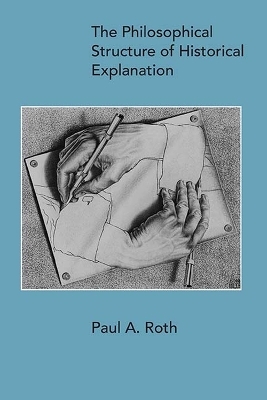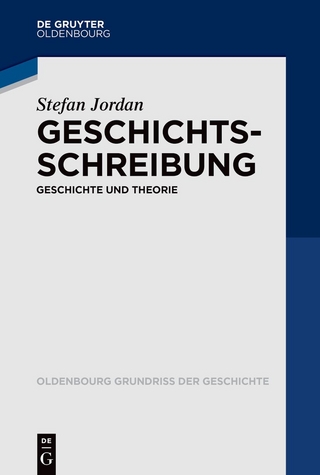
The Philosophical Structure of Historical Explanation
Seiten
2020
Northwestern University Press (Verlag)
978-0-8101-4087-5 (ISBN)
Northwestern University Press (Verlag)
978-0-8101-4087-5 (ISBN)
Develops an argument that resolves disputes persisting since the nineteenth century about the scientific status of history. Paul Roth does this by showing why historical explanations must take the form of a narrative, making their logic explicit, and revealing how the rational evaluation of narrative explanation becomes possible.
In The Philosophical Structure of Historical Explanation, Paul A. Roth develops an argument that resolves disputes persisting since the nineteenth century about the scientific status of history. He does this by showing why historical explanations must take the form of a narrative, making their logic explicit, and revealing how the rational evaluation of narrative explanation becomes possible.
The book also develops a nonrealist (irrealist) metaphysics and epistemology of history-that is, it argues that there exists no one fixed past but many pasts. It includes a novel reading of Thomas S. Kuhn's The Structure of Scientific Revolutions, displaying how Kuhn offers a narrative explanation of theory change in science. And it situates narrative explanations within a naturalistic framework.
The first four chapters defuse methodological and metaphysical objections to narrative explanations. The final three chapters explore how narrative explanations relate to other sciences. It will be of interest to researchers in historiography, philosophy of history, philosophy of science, philosophy of social science, and epistemology.
In The Philosophical Structure of Historical Explanation, Paul A. Roth develops an argument that resolves disputes persisting since the nineteenth century about the scientific status of history. He does this by showing why historical explanations must take the form of a narrative, making their logic explicit, and revealing how the rational evaluation of narrative explanation becomes possible.
The book also develops a nonrealist (irrealist) metaphysics and epistemology of history-that is, it argues that there exists no one fixed past but many pasts. It includes a novel reading of Thomas S. Kuhn's The Structure of Scientific Revolutions, displaying how Kuhn offers a narrative explanation of theory change in science. And it situates narrative explanations within a naturalistic framework.
The first four chapters defuse methodological and metaphysical objections to narrative explanations. The final three chapters explore how narrative explanations relate to other sciences. It will be of interest to researchers in historiography, philosophy of history, philosophy of science, philosophy of social science, and epistemology.
Paul A. Roth is a distinguished professor of philosophy at the University of California, Santa Cruz.
Acknowledgments
Introduction
1. Reviving Analytic Philosophy of History
2. Problems for Narratives Explanations: The Case of History
3. The Pasts
4. Essentially Narrative Explanations
5. The Silence of the Norms
6. Kuhn’s Narrative Construction of Normal Science
7. Methodological Naturalism and Its Consequences
Conclusion
Notes
Works Cited
Index
| Erscheinungsdatum | 31.10.2019 |
|---|---|
| Verlagsort | Evanston |
| Sprache | englisch |
| Maße | 152 x 229 mm |
| Gewicht | 279 g |
| Themenwelt | Geisteswissenschaften ► Geschichte ► Geschichtstheorie / Historik |
| Geisteswissenschaften ► Philosophie ► Philosophie der Neuzeit | |
| ISBN-10 | 0-8101-4087-X / 081014087X |
| ISBN-13 | 978-0-8101-4087-5 / 9780810140875 |
| Zustand | Neuware |
| Haben Sie eine Frage zum Produkt? |
Mehr entdecken
aus dem Bereich
aus dem Bereich
Russland, die Ukraine und der Westen
Buch | Softcover (2024)
De Gruyter (Verlag)
CHF 55,90
Geschichte und Theorie
Buch | Softcover (2024)
De Gruyter Oldenbourg (Verlag)
CHF 34,90
wie Irritationen historisches Denken anregen
Buch | Softcover (2024)
Kohlhammer (Verlag)
CHF 96,55


